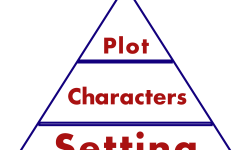Characters: The Drivers of the Story

The characters are the people (or other beings) that execute the plot. It is their motivations that drive the action of a story, and their motivations are at least partly derived from the setting. A coherent plot will be dependent on characters whose goals and desires are believable and whose actions have an impact. Characters fall into many archetypes (which I will cover later on), but in a story, they tend to fall into several broad functions: Protagonists Antagonists Auxiliary characters A story can have more than one protagonist and more than one antagonist, or it can have no antagonist…




